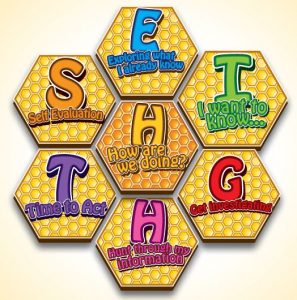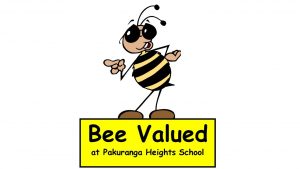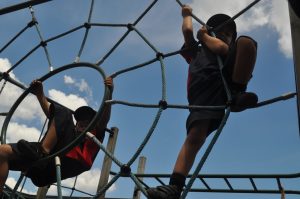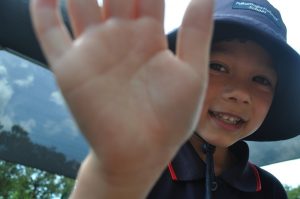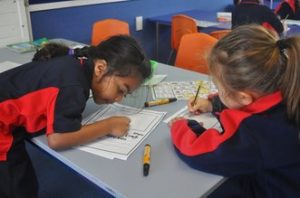 | The Basics of Literacy & Numeracy We believe it is important to educate our children to be strong in the basics of literacy and numeracy and that it should be fun! In the first years at school students will be immersed in written, oral and visual language and taught to master the basics of reading and writing. We start to develop oral literacy and oral performance skills in the children from Year 1. In the senior school, children then extend their reading and writing skills and experience a range of genres. They apply their literacy skills to research projects, performance and speech and refine and develop these so that they are fully independent and confident by the time they leave us. Students are taught how to approach mathematical problems in a range of ways and apply their basic knowledge of number to a range of increasingly complex mathematical problems, using strategies developed under the National Numeracy Project. The basics of counting, time, money and times tables are still emphasized. |
The Pak Heights Learner
| The Pak Heights Learner The Pak Heights Learner incorporates the vision and key competencies of the New Zealand Curriculum as identified by the Pakuranga Heights learning community. These dispositions prepare students for the challenges of being a confident, connected, actively involved life-long learner. Our Bee Valued programme is the foundation in which students will also foster the dispositions. Staff promote the use of the dispositions through focusing weekly on one disposition and identifying when students show that disposition. Students and staff are encouraged to use the vocabulary of the dispositions. At each three-way conference in May and November teachers report to parents on how well students are working towards using the dispositions. Our Pak Heights Learner dispositions are:
Download (from the attachment at bottom of page) a copy of our rubric of the behaviours that exemplify each disposition. |
Inquiry
| The Hive of Learning and our Integrated Curriculum In today’s information-orientated world, it is vital that all of our students know how to investigate questions and solve problems. We have been developing an integrated approach to delivering the curriculum based around inquiry learning strategies and real contexts for learning. Children develop ‘authentic’ tasks and questions as part of the learning process and with the assistance of a range of resources, seek to find answers to these questions and apply the information to answer the questions they have posed. Chromebooks and iPads in every classroom assist this process with access to web based resources. The traditional curriculum areas of social studies, science, technology, the arts, health and PE, as well as language and mathematics are integrated in this approach. The Heights Hive of Learning was developed to illustrate the stages in the learning process and to reinforce the metaphor of learning and working together. Our inquiry model is based upon the acronym HEIGHTS. To align with our school vision of “Reaching new heights together”, a honey comb was symbolic to represent our Bee Values programme and bee school mascot.There are 6 stages in the inquiry learning process and learners should always know what stage they are at. The 6 stages always link back to the central “H” honey comb where learners are asked to reflect on their learning by asking “how am I doing?”. |
Positive Behaviour for Learning School-Wide (PB4L-sw)andBee Values at Pakuranga Heights School
| The Positive Behaviour for Learning for School-Wide Framework Pakuranga Heights School started the PB4L journey because we want to ensure our students are happy, confident and empowered learners who can make good choices in any situation. PB4L-sw at our school runs alongside our values and dispositions, and programs such as ‘Cool Schools’ and Peer Mediating. It includes strategies that we already use such as ‘pink values slips’, ‘ bucket fillers’ and reward points. Our Values Programme Our four Bee-Values are:
and we all model the values. The Bee Mascot Bee valued awards are given out to students consistently showing our school values. |
Our Reporting
In our reporting at Pakuranga Heights School it is acknowledged that encouragement and support from parents and carers are important elements in the learning process. This partnership is the foundation of our vision “Reaching new heights together”. It is vital that parents and caregivers are well informed.
Reporting to parents and carers occurs through:
- Establishing relationships: a ten minute interview within the first two weeks of school for parents to share their aspirations for the learning partnership with new teacher
- Written reports: Mid-year to show progress towards the New Zealand curriculum levels and at the End of Year to show achievement against the New Zealand curriculum levels.
- Three-way conferences: after Mid-Year reporting to discuss progress and learning goals towards achieving the National Standards. This is a vital time to encourage your child and show how home and school work together
- Assessment Data: shared as necessary ongoing throughout the year.
- Parent information evenings and workshops
- Informal conversations throughout the year
- New Entrant, School Entry Assessment: This is shared with parents after 6 weeks of schooling
- 6 Year Net:information from this assessment is shared with parents soon after your child has turned 6 years old
 |
|
|
If you are interested in a particular Standard you can also use these direct links to the Ministry information:


